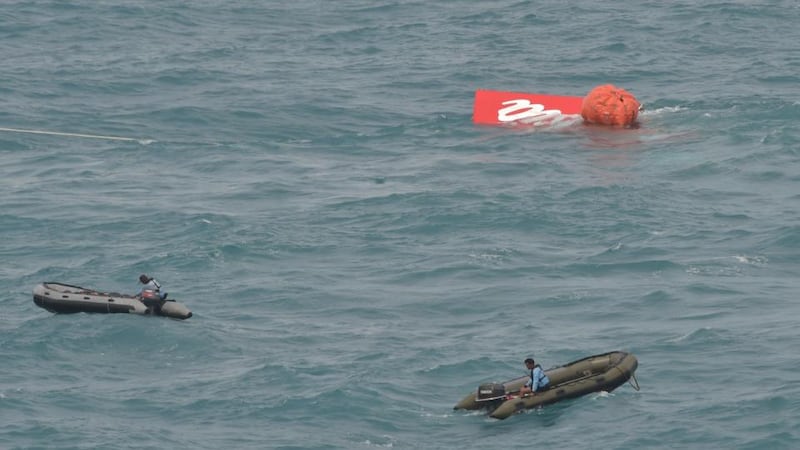Indonesian search and rescue teams on Saturday recovered the tail of an AirAsia passenger jet that crashed nearly two weeks ago with the loss of all 162 people on board.
Search and rescue teams detected pings they believed were from the AirAsia Flight QZ8501 recorders on Friday and two teams of divers resumed the hunt soon after dawn on Saturday.
The tail of the Airbus A320-200 was found on Wednesday, upturned on the sea bed about 30 km from the plane’s last known location at a depth of about 30 metres.

Crews brought it up from the bottom with the help of air bags.
Speaking with reporters in the town of Pangkalan Bun, operations coordinator for the National Search and Rescue Agency, Suryadi B Supriyadi, said : “Yes, the tail is already on the surface. It’s currently being brought close to a ship and then it will be towed. And then they want to search for the black box.”
The aircraft carries the cockpit voice and flight data recorders , or black boxes, near its tail.
However, officials had said earlier it looked as if the recorders, which will be vital to the investigation into why the airliner crashed, had become separated during the disaster.
"The divers looked for the black box but they didn't find it," Mr Supriyadi said. "But it has to be checked again. Lifted and checked again."
He said it could take up to 15 hours to tow the tail to land.
Suspected wreckage
Strong winds, currents and high waves have been hampering efforts to find remaining victims and to reach other large pieces of suspected wreckage detected by sonar on the sea floor.
On Friday, Mr Supriyadi said the pings were believed to have been detected about 1 km away from the tail.
If the recorders had become separated from the tail they could be covered in mud, making the search in the murky water that much more difficult, he said.
“The pings can only be detected within a radius of 500 metres so it can be a large area to cover,” he said.
If and when the recorders are found and taken to the capital, Jakarta, for analysis, it could take up to two weeks to download data, investigators said, although the information could be accessed in as little as two days if the devices are not badly damaged.
The plane lost contact with air traffic control during bad weather on December 28th, less than half way into a two-hour flight from Indonesia to Singapore.
Forty-eight bodies have been recovered in the Java Sea off Borneo and no survivors were found.
While the cause of the crash is not known, the national weather bureau has said seasonal storms were likely to be a factor.
Reuters









